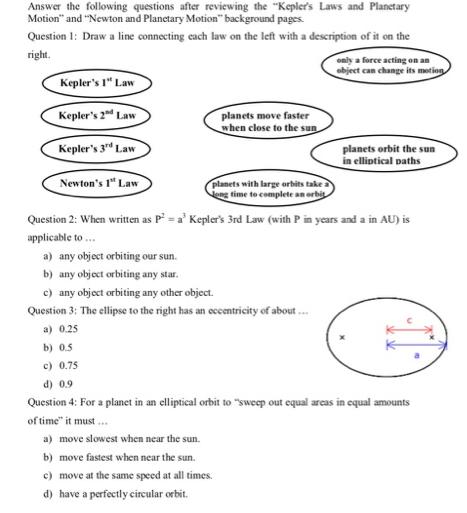Answered step by step
Verified Expert Solution
Question
1 Approved Answer
Answer the following questions after reviewing the Kepler's Laws and Planetary Motion and Newton and Planetary Motion background pages. Question 1: Draw a line

Answer the following questions after reviewing the "Kepler's Laws and Planetary Motion" and "Newton and Planetary Motion" background pages. Question 1: Draw a line connecting each law on the left with a description of it on the right. 0000 Kepler's I" Law Kepler's 2nd Law Kepler's 3rd Law Newton's 1 Law planets move faster when close to the sun planets with large orbits take a long time to complete an orbit a) any object orbiting our sun. b) any object orbiting any star. c) any object orbiting any other object. Question 3: The ellipse to the right has an eccentricity of about... a) 0.25 only a force acting on an object can change its motion Question 2: When written as P = a Kepler's 3rd Law (with P in years and a in AU) is applicable to ... a) move slowest when near the sun. b) move fastest when near the sun. c) move at the same speed at all times. d) have a perfectly circular orbit. planets orbit the sun in elliptical paths b) 0.5 c) 0.75 d) 0.9 Question 4: For a planet in an elliptical orbit to "sweep out equal areas in equal amounts of time" it must...
Step by Step Solution
★★★★★
3.48 Rating (168 Votes )
There are 3 Steps involved in it
Step: 1
The detailed answer for the above question is provided below Lets go through each question one by one Question 1 Draw a line connecting each law on th...
Get Instant Access to Expert-Tailored Solutions
See step-by-step solutions with expert insights and AI powered tools for academic success
Step: 2

Step: 3

Ace Your Homework with AI
Get the answers you need in no time with our AI-driven, step-by-step assistance
Get Started


